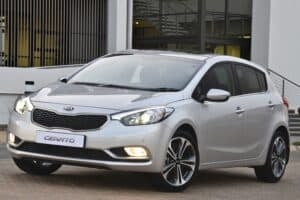Flagship single cab D-Max finally had the opportunity to show its true credentials as a workhorse.
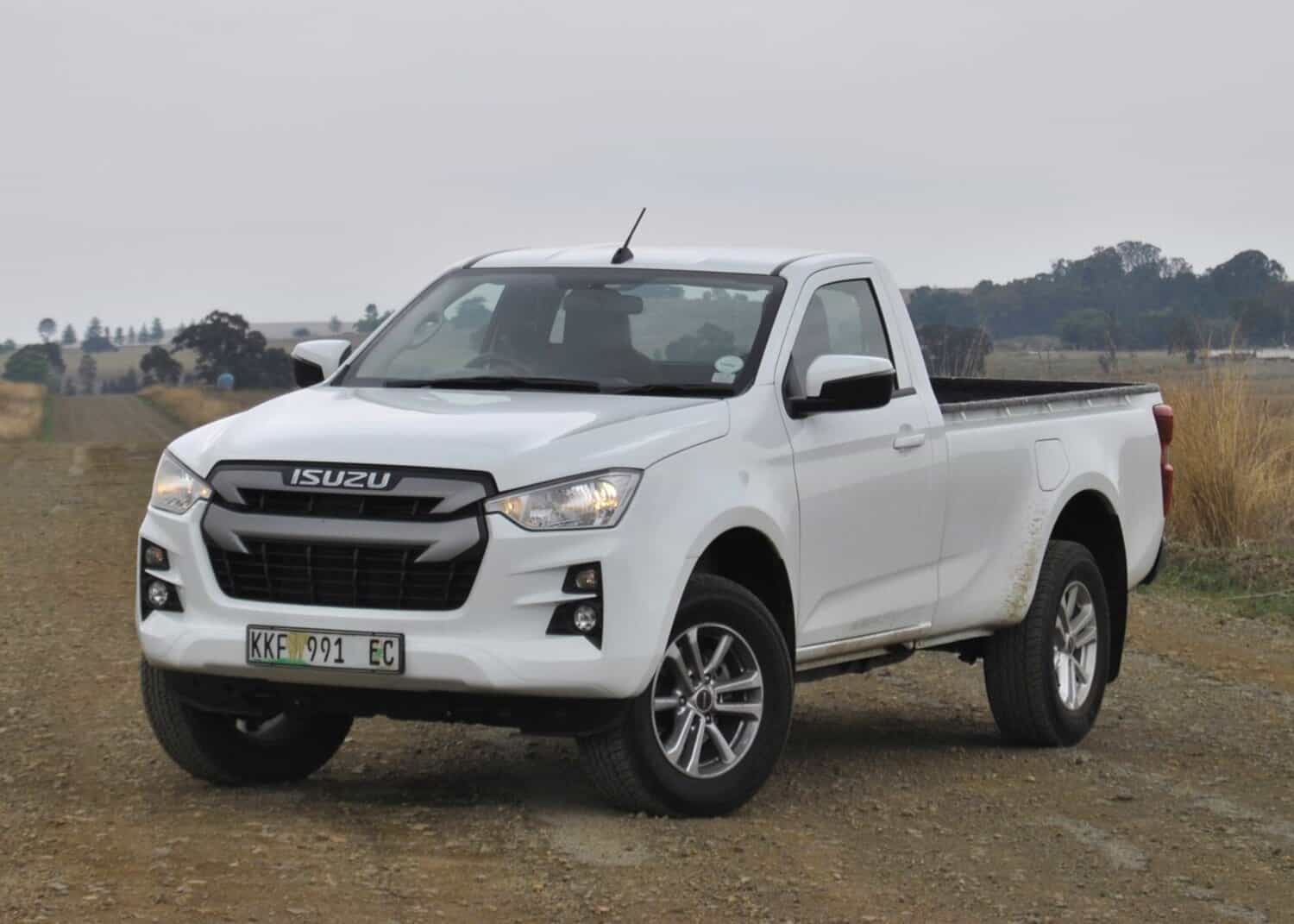
After three months and 2 301 km, The Citizen’s long-term Isuzu D-Max single cab LS has returned home after what has been an interesting tenure.
Taking the single cab
As mentioned in its introductory piece, single cab bakkies are seldom provided to the media for the seven-day testing period, let alone an extended long-term evaluation, largely as a result of being impractical for family use and for lacking the latest and greatest features that are otherwise standard on the top-spec double cab derivatives.
While the LS represents the flagship single cab D-Max, it omits a reverse camera, rear parking sensors, leather upholstery, the bigger nine-inch infotainment system, push-button start and the suite of safety and driver assistance systems found on the double cab LSE and V-Cross.
NOW READ: Isuzu D-Max single cab soon to trade barrels for house moving
The other side of the coin is that a single cab is designed to work and be less of a leisure tool with all of the trimmings as a double cab.
This presented a problem in itself as, right from the start, there was little need for the D-Max’s workhorse credentials to be put to the test.
Quiet for two months
Apart from being called on to transport a pair of empty wine barrels for Head of Motoring Jaco van der Merwe, the D-Max was mostly bound for the daily commute, waiting patiently at OR Tambo for its minder to return from launches or running errands.
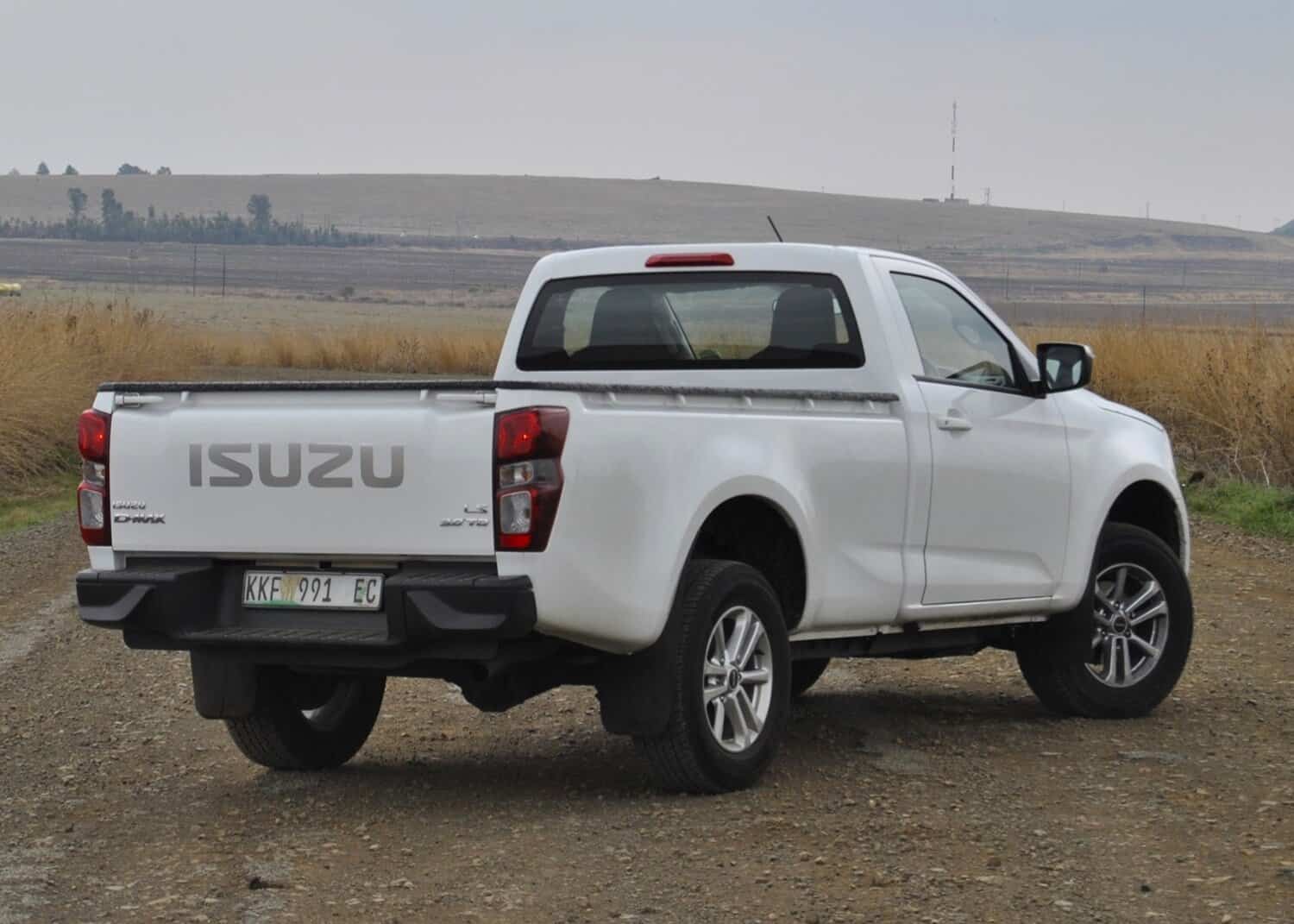
Fortunately, this changed mid-September via a road trip to Bethlehem in the Free State to help this writer’s cousin move house.
A trip that would also put the single cab’s long-haul capabilities to the test, the trek from Johannesburg also promised lower fuel consumption, which had been hovering around 10-litres per 100 km.
Basic but not poverty spec
Throughout the D-Max’s tenure, the basicness of its interior came as a welcome departure from the tech-laden, but also sometimes fussy layout of certain double cabs.
Aside from a conventional air-conditioning system, starting the D-Max is done by a key inserted into the ignition barrel, and releasing the handbrake by a mechanical lever.
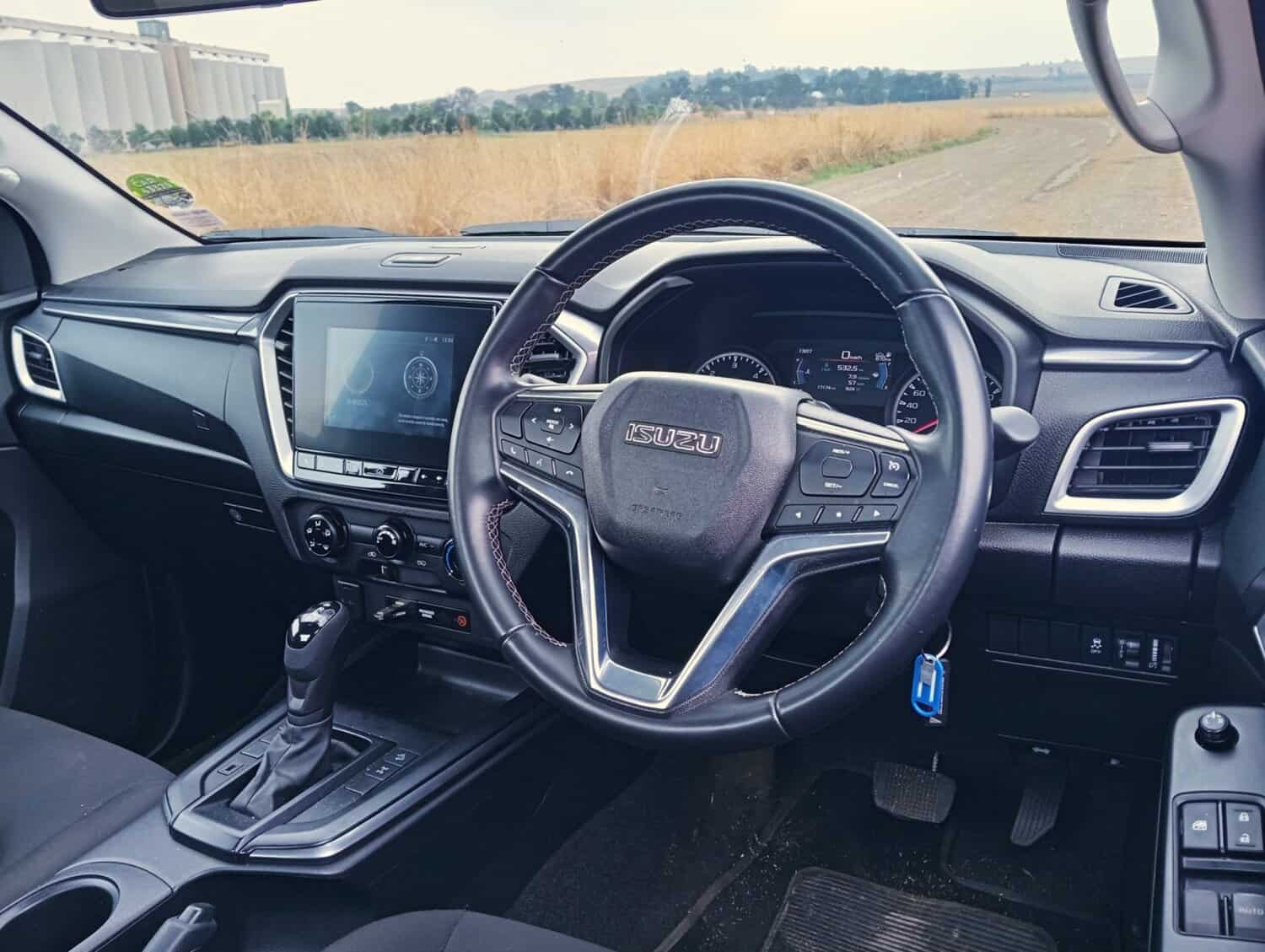
Far from being spartan, it does feature a height adjustable steering column, a four-speaker sound system, height adjustable seats, a multi-function steering wheel, cruise control, a 4.2-inch TFT instrument cluster display and electric windows.
Thrown into the mix further is a rubberised loadbin, halogen daytime running lights, 17-inch alloy wheels, electric mirrors, auto lock/unlock doors, Apple CarPlay and Android Auto, a rear diff-lock, dual front airbags, traction control and Hill Descent Control.
The bad and the good
Unashamedly furnished with hard but solid feeling plastics, the cabin’s ergonomics left little to be desired, though the same cannot be said of the seven-inch infotainment system.
The smallest in Isuzu’s range, the system irks for being laggy and nowhere near as intuitive as Ford’s SYNC 4A, for example.
Making matters even worse is the supposed safety setting in which the display becomes inoperable on the move regardless whether you want to deviate from a playlist, or select a different radio channel.
Just as bizarre was the system having been programmed to dim when the headlights are switched off.
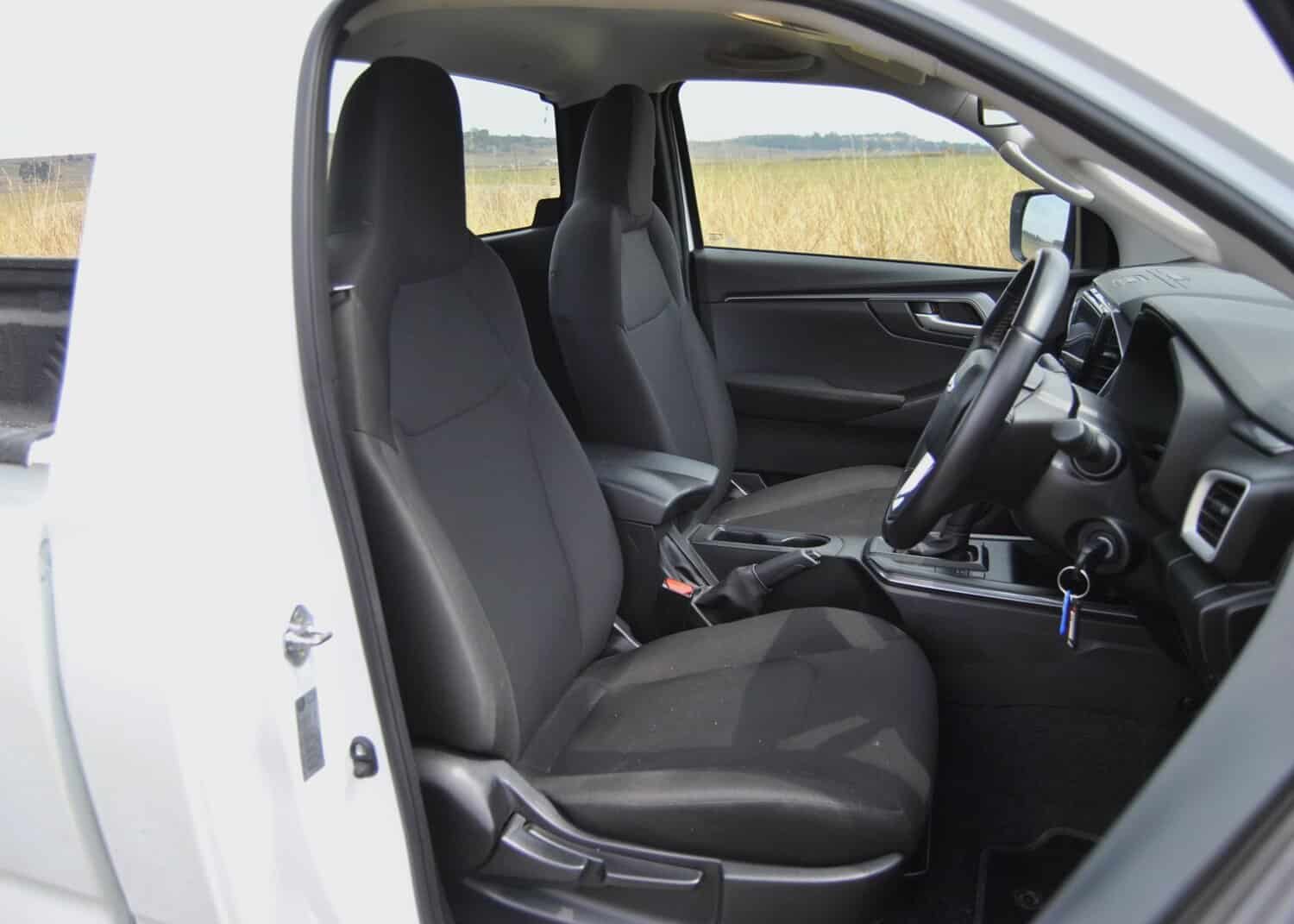
Attempts to change this failed, meaning the lights had to be on the whole time to navigate through the display – something that has never happened with the nine-inch fitted to the double cab D-Max or even the MU-X.
Shortcut buttons at the display’s base did provide some relief; however, the lack of a traditional volume knob was disappointing.
More acceptable is seat comfort, the myriad of storage spaces – including behind the seats – and the grippy leather-wrapped steering wheel itself.
Finally, some work…
The trip to Bethlehem was, of course, the biggest test and despite having to wait for hours at roadblocks for, thankfully, road works on a stretch of road outside Sasolburg known for its poor and shoddy condition, the D-Max coped well.
Unsurprisingly lively without a load in the back, the locally built D-Max’s interior didn’t emit any rattles after or creaks throughout the three months.
Rated to carry 1 205 kg in its 2 330 mm long loadbin, the moving process consisted of four round trips amounting to 100 km.
Besides household items in boxes, garden paraphernalia, a small wall unit and even a litterbox were some of the items that needed transporting.
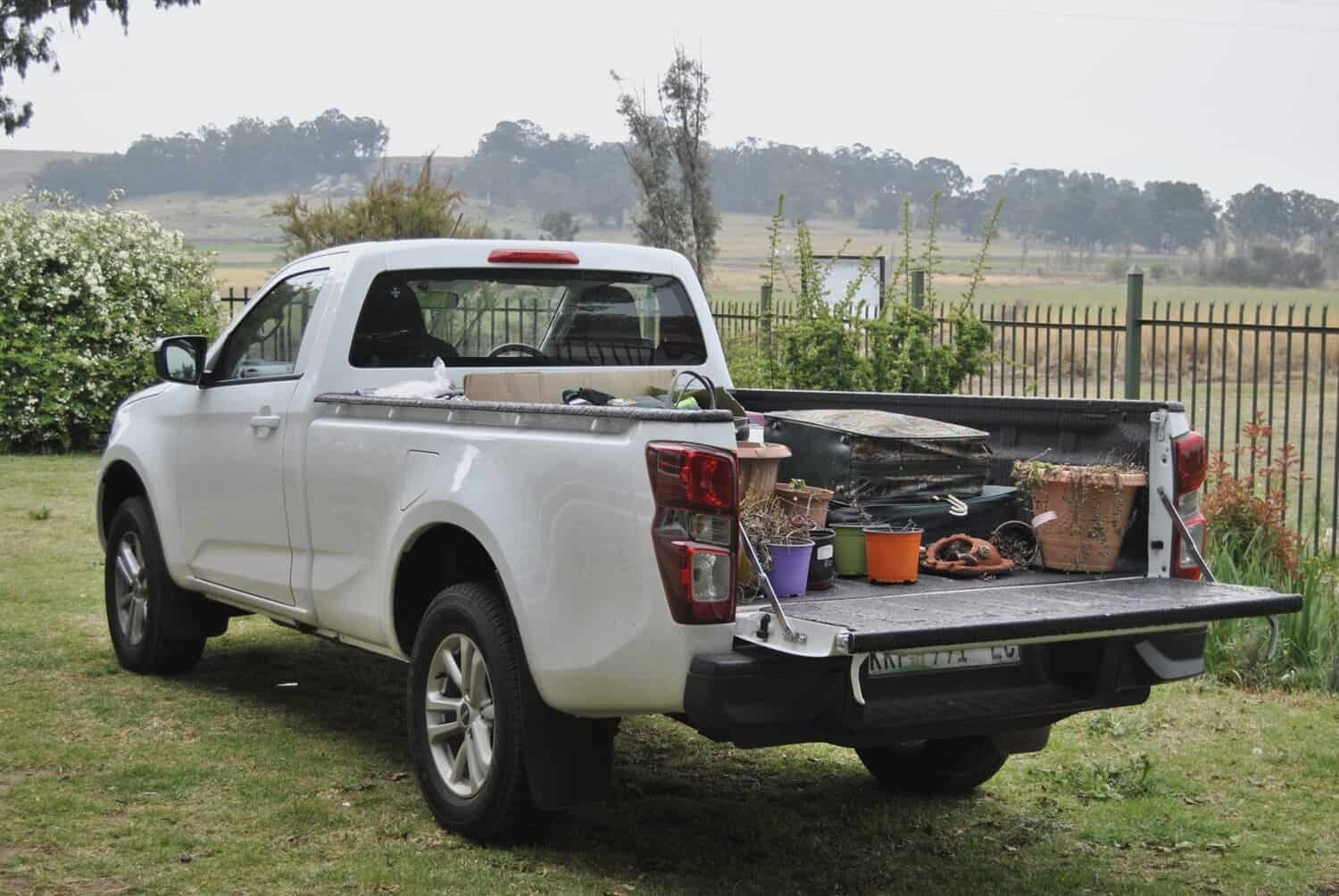
Although nowhere near the loading limit, the added weight – unsurprisingly – made a considerable difference in ride quality by almost removing the bouncy feel with nothing in the back.
What’s more, the 4JJ3-TCX 3.0-litre turbodiesel engine showed no reduced performance with an extra few 100 kg present.
In fact, the powertrain’s only iteration is the six-speed automatic gearbox, which, while slick at speed, would drop two gears at once when going downhill or take its time to find the right gear at slower speeds.
Luckily, it can be overridden by opting for manual mode and changing gears sequentially using the gear lever as no paddles are present.
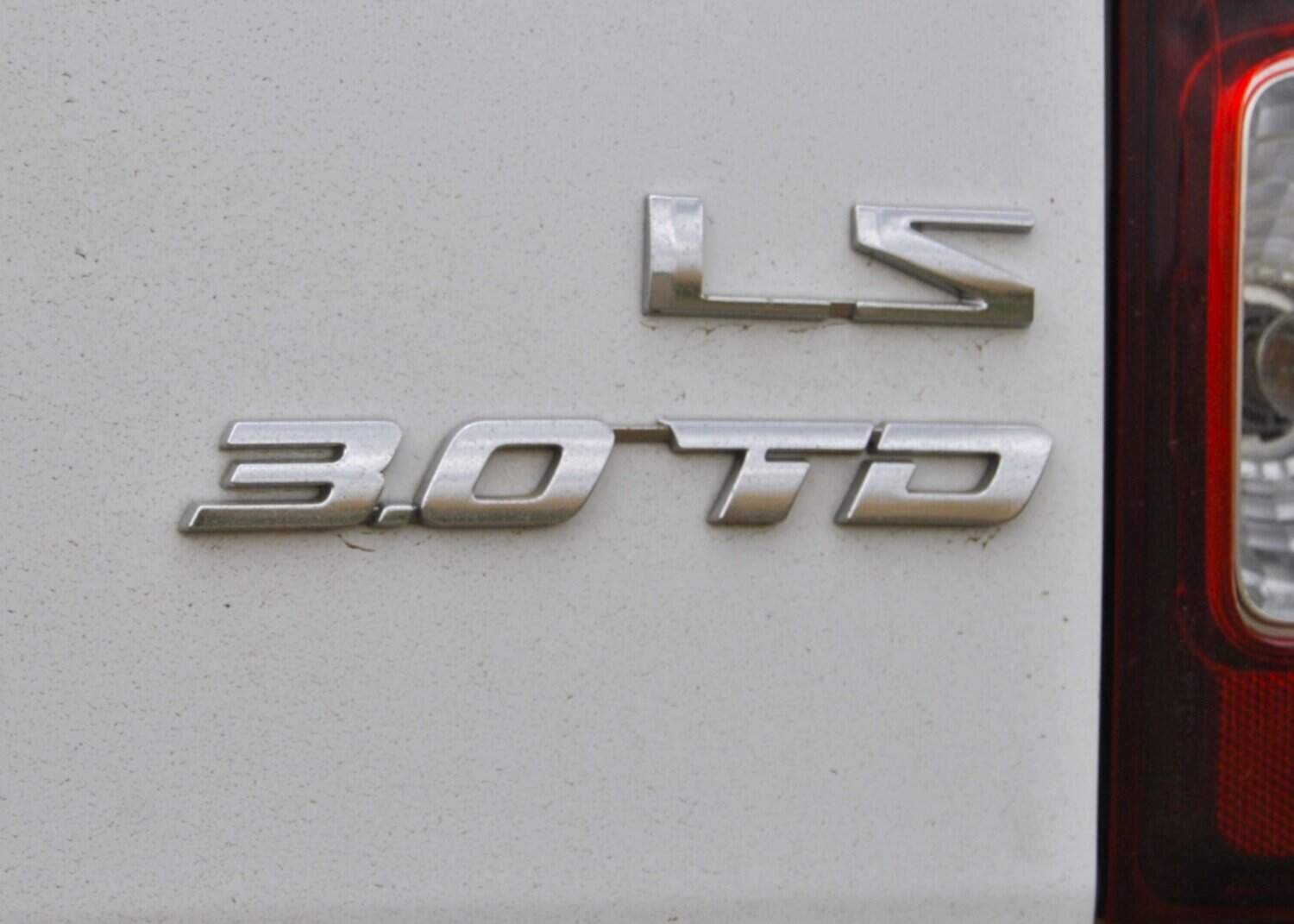
As much as the trip had shown the D-Max’s working credentials, and indeed comfort for what is still a workhorse, the other point of content, fuel consumption, was also addressed.
Including spells with the air-conditioning and demister on as a result of heavy rain that lashed the central Free State at the time, the eventual 794 km trek saw overall consumption from the moment of arrival drop from 10-litres to nine-litres per 100 km.
The trip itself yielded a best of 7.3 L/100 km, before falling back to eight-litres per 100 km.
… and more
Once back in Johannesburg, enquiries for the D-Max came flooding in. Along with having to transport another pair of wine barrels, this time for editor Trevor Stevens, Multimedia Editor Michel Bega also needed a trio of bicycles fetched.
Weeks before its return, the final and arguably most challenging assignment came in: transport a mini jeep from the East Rand back to Johannesburg.
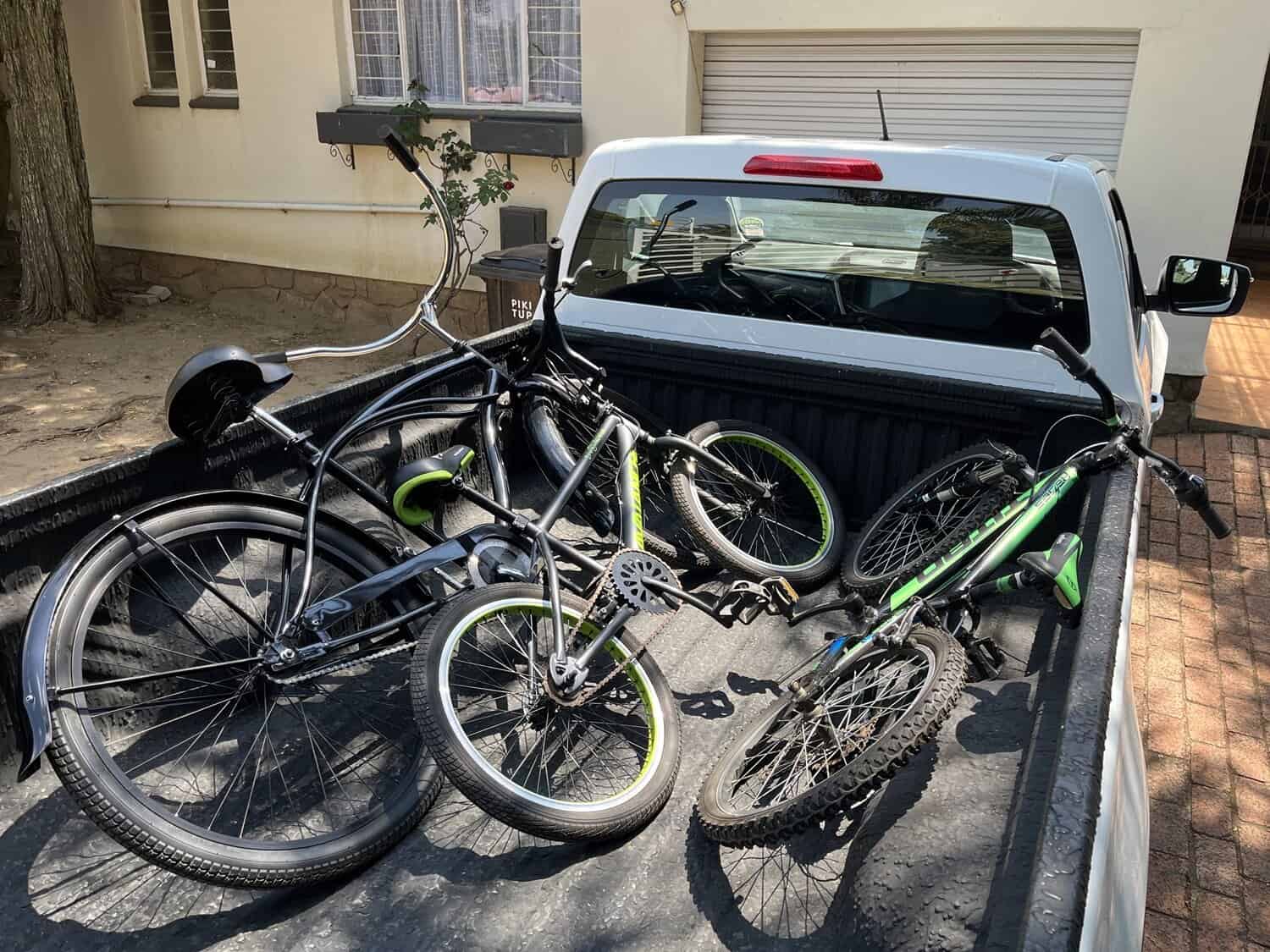
A task that worried, seeing as we hadn’t seen the jeep prior to collecting it, the miniature Willys required some manhandling to get into the loadbox.
Tied down using heavy-duty straps plus the four tie-down hooks mounted on the inner walls of the ‘bin, the D-Max, again, failed to be discouraged by the probable 500 kg load from a performance standpoint.
As standard, the LS is powered by the stalwart N-series truck derived 3.0-litre oil-burner that makes 140kW/450Nm.
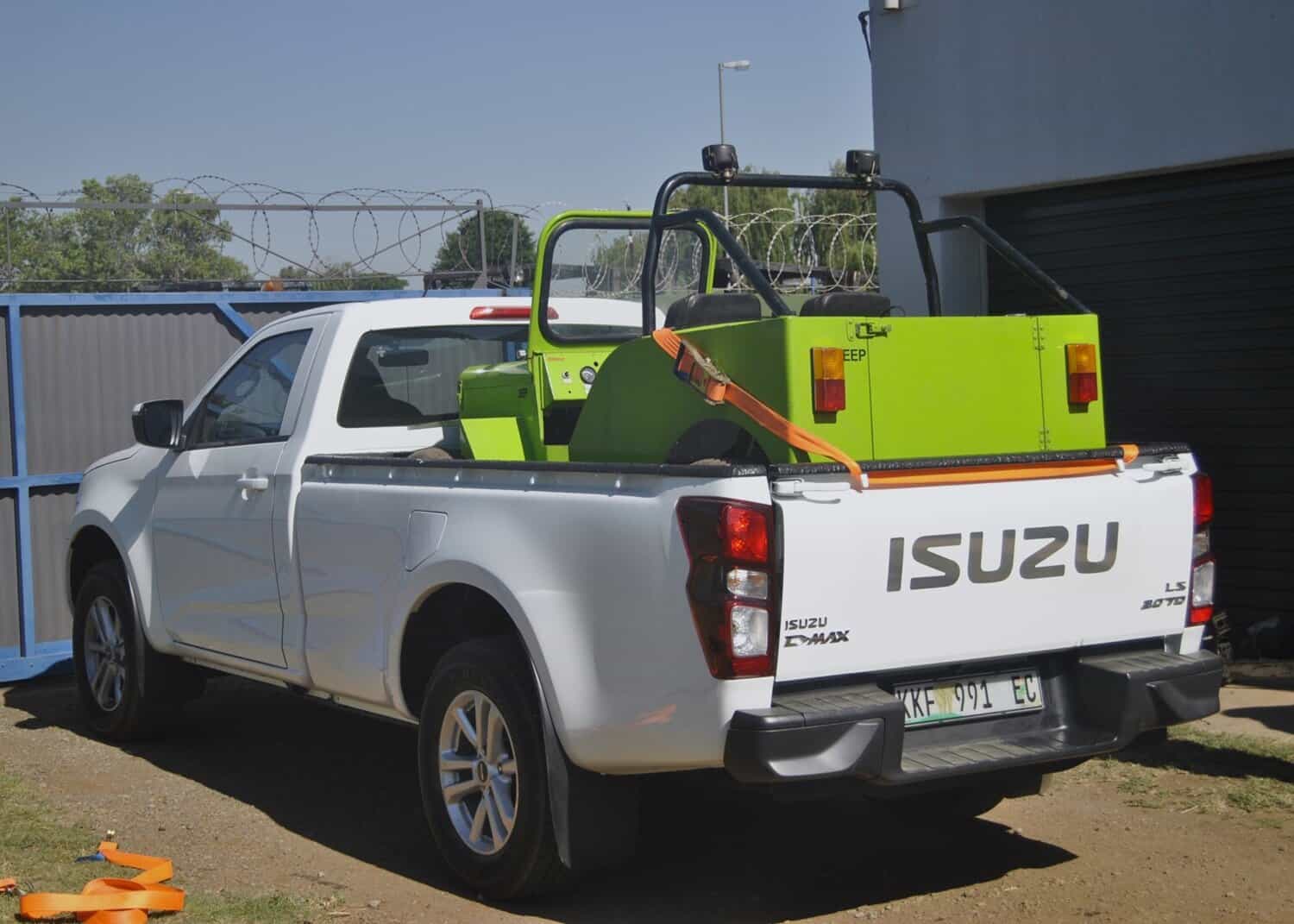
Mated to the automatic ‘box from the start, the only option is ticking the four-wheel drive box, which comes with a premium of R81 300 – ours having been the rear-wheel drive.
With the jeep tied down, ride quality was again the main beneficiary, while consumption had slipped back, but only to 9.1 L/100 km, where it remained until its return.
Conclusion
As much as the practical standpoint of a double cab continues to be undisputed, single cabs are still the bread-and-butter of many bakkie brands.
At R590 800, the single cab, two-wheel drive Isuzu D-Max 3.0 DDI LS auto makes for a compelling package, if on the pricey side compared to the newer and slightly better equipped, but also less powerful single turbo Ford Ranger XL priced R574 000
Significantly cheaper than the Toyota Hilux 2.8 GD-6 RB Raider stickered at R646 200, the D-Max remains a solid and dependable choice given not only Isuzu’s reputation for reliability, but simplicity despite being dated in some areas.
A tenure that still surprised for being a welcome double cab break, it will continue, but this time with pending arrival of the cab-and-half Extended Cab soon.
Included with the D-Max’s price is a five-year/120 000 km warranty and a five-year/90 000 km service plan.
ALSO READ: Work-ready single cab Isuzu D-Max ready to strut its stuff






